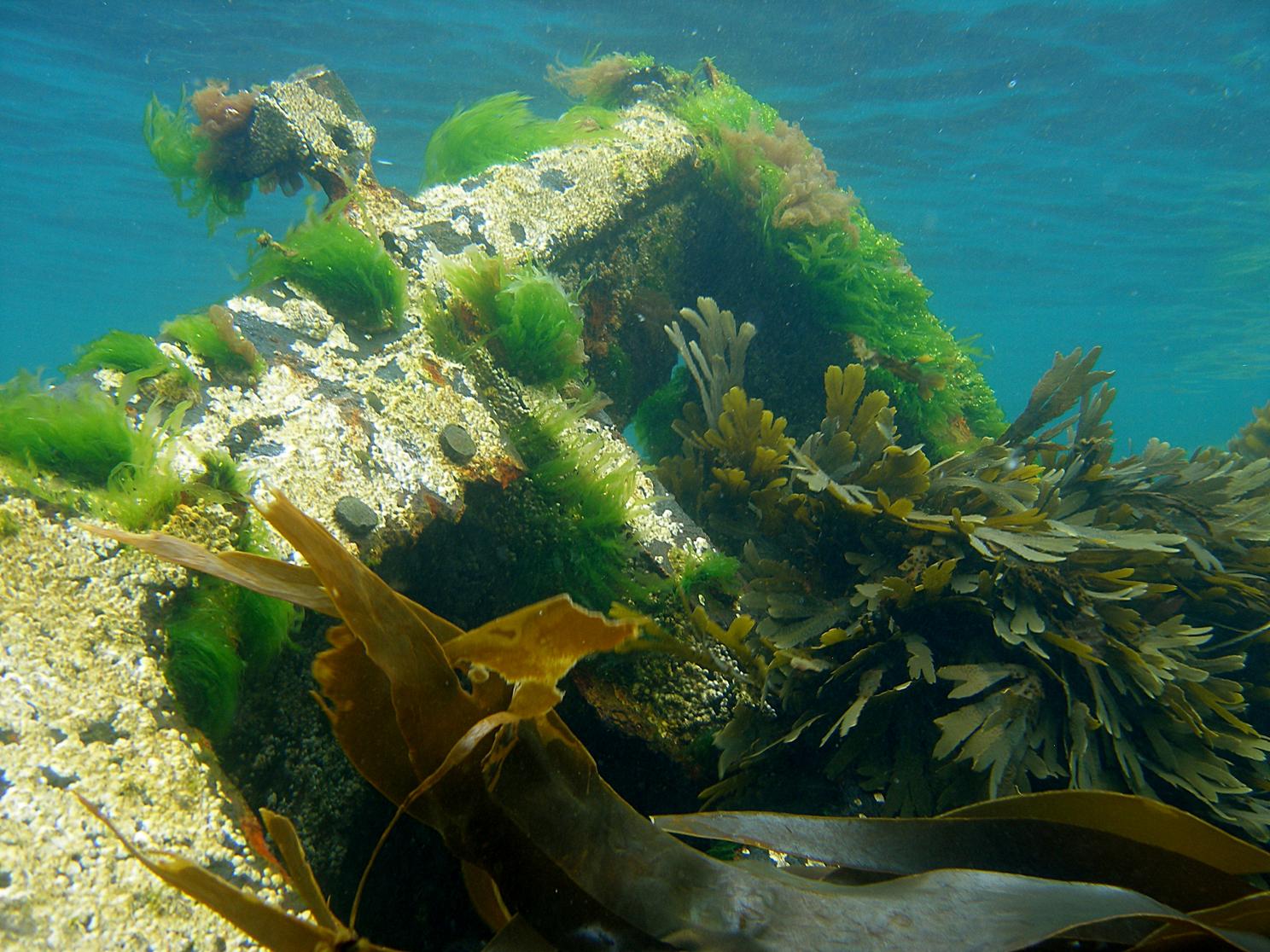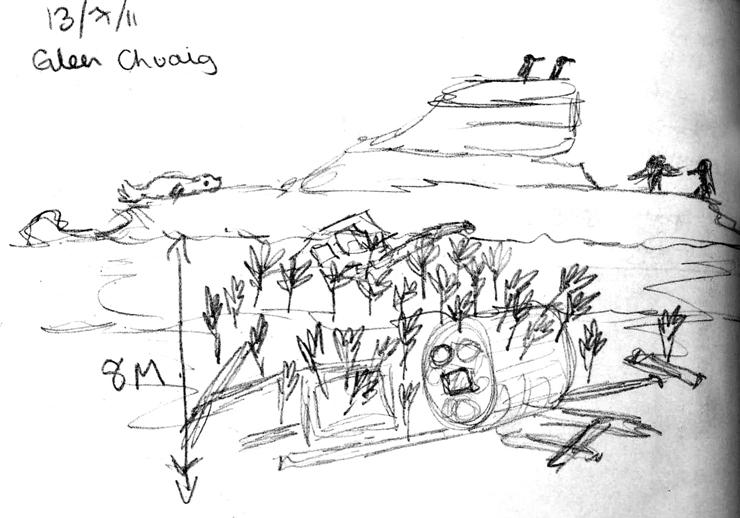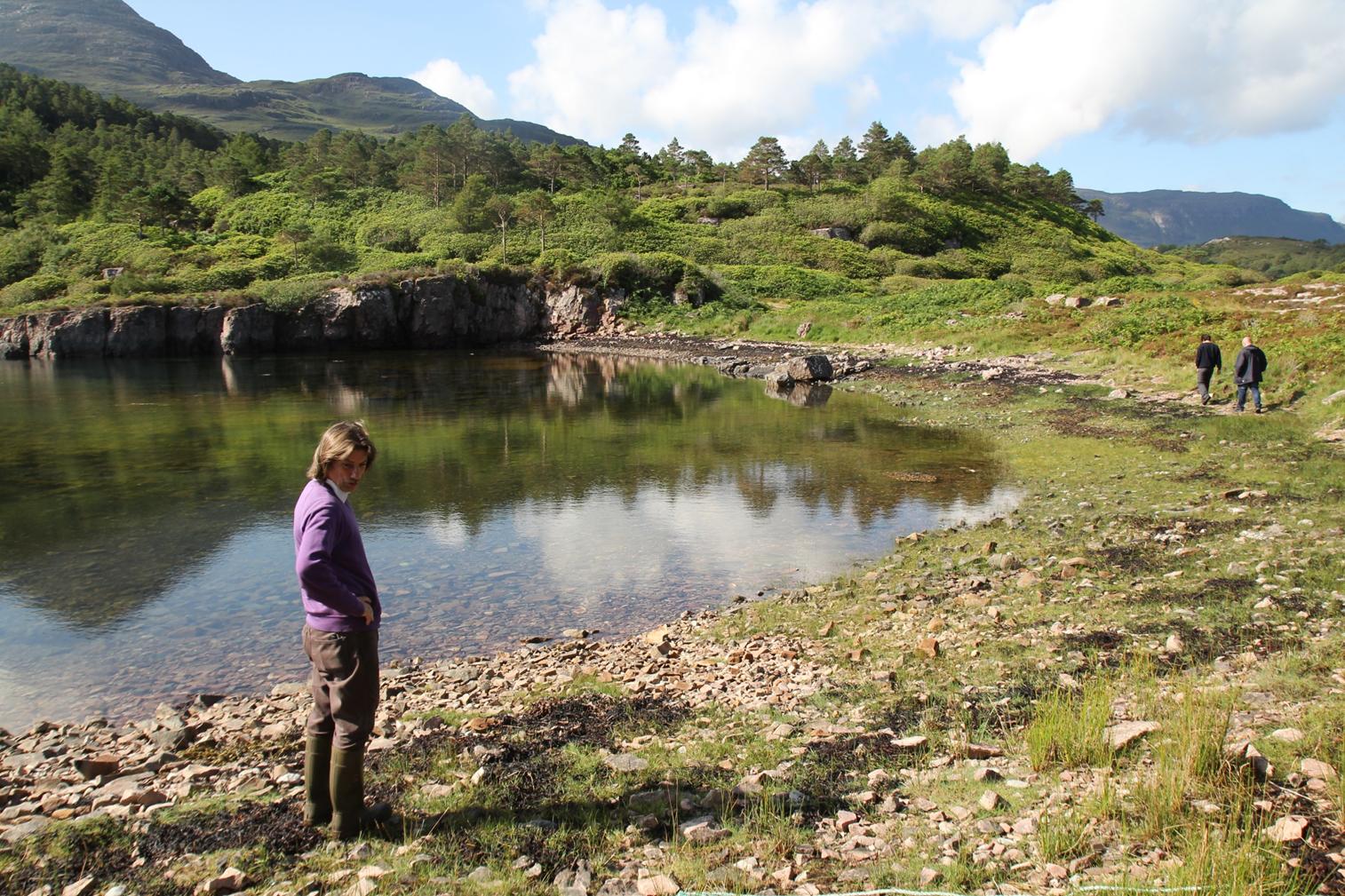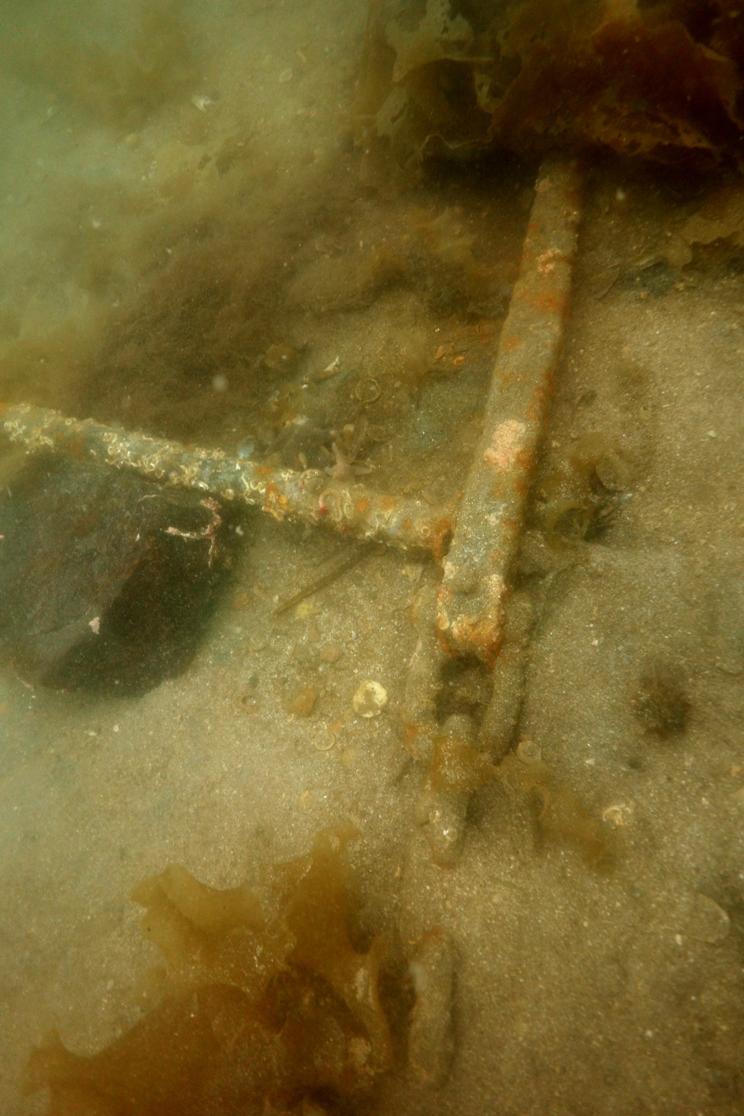The photo shows one of several previously unknown wreck locations near Chuaig Bay recorded through community engagement undertaken for the SAMPHIRE project. This location was first mentioned by locals in Shieldaig as the site of the SS Sheila, an early MacBrayne ferry. After we had finished our diving in the area we were given more detailed information by two divers from the Aberdeen Sub-Aqua Club. John and Jo Beaton discovered the wreck in 2011 and kindly provided us with accurate coordinates, a beautiful sketch, several photos and a detailed description.
Review of all available information now suggests that the Sheila is probably at another location 500 metres to the south of this wreck, on the edge of Chuaig Bay. Another possibility is that is that this could be part of the wreck of the Hersilia whose loss is recorded at the island in 1916 and which has never been located. The Hersilia was an armed iron naval yacht built in 1895 and registered in Leith. It was 52 metres long and sank at Chuaig Island in 1916.





